This isn’t a paid review.
A lot of people wonder how we were even able to get a room here. It’s not like a swanky hotel. It’s actually four stars. This reservation was made 6 months ahead of our planned trip. Hoping that nothing would come in the way, I went ahead and booked the three rooms for a party of six adults.
Located right smack in the Ginza district, this hotel has the minimalist and environmental-friendly feel. The location is the crown jewel stand out for this hotel. Right in the heart of the Ginza district, where the posh high-end shops are never ending, the hotel is just a few steps away from Mitsuhikoya and Matsukaya Ginza, as well as the branded names of Fendi, LV, Gucci, Prada, Hermés, Bottega Venetta, Valentino, et al, or the likes of Apple and Samsung flagship shops, Ginza is home to several Michelin starred restaurants and the more upscale Tokyo Peninsula.
So why pick the Muji Hotel at Ginza? But this hotel is not without hiccups! Aside from the aforementioned location, the flagship Muji shop is located on the first five floors and a Muji Diner at the basement of this building. The hotel, with 79 rooms, is located on the 6th to 10th floor. The stores and diner close at 9pm daily. That means the access to the hotel from the main shop closes as well. You will need to use the hotel entrance at the back of the store to gain access to your rooms after 9pm.
The reception is located on the 6th floor. There is no luggage service, so don’t expect a baggage boy come rushing to the doorstep to meet you. There is also hardly anyone at the front desk after 11pm. When we arrived close to 11pm last Sunday, I called the hotel and was asking where the entrance was, we couldn’t understand each other. While the staff may speak English, it’s quite basic and things get lost easily in translation. This is, after all, not the Four Seasons at Maranouchi (a favorite of mine).
The rooms are decent. Most of them follow a type C design. In reality, when Muji had bought this building, it was originally designed to be an office and not a hotel. Which accounts for the way the interiors of the hotel have been retrofitted to an appealing but not functional look.
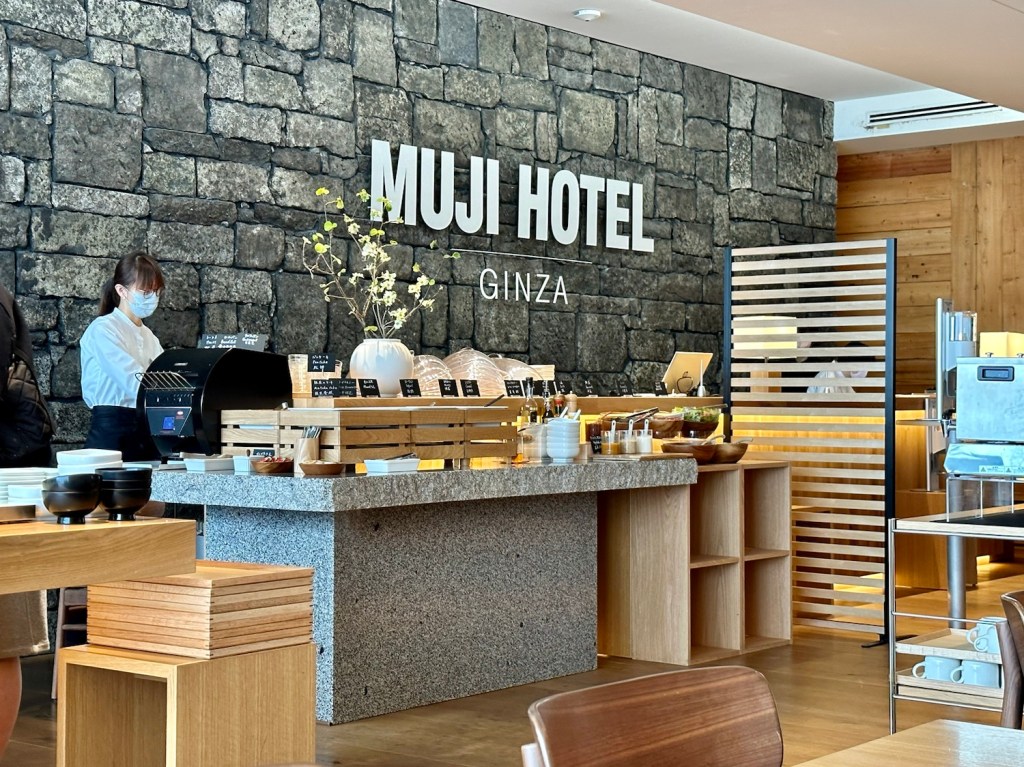
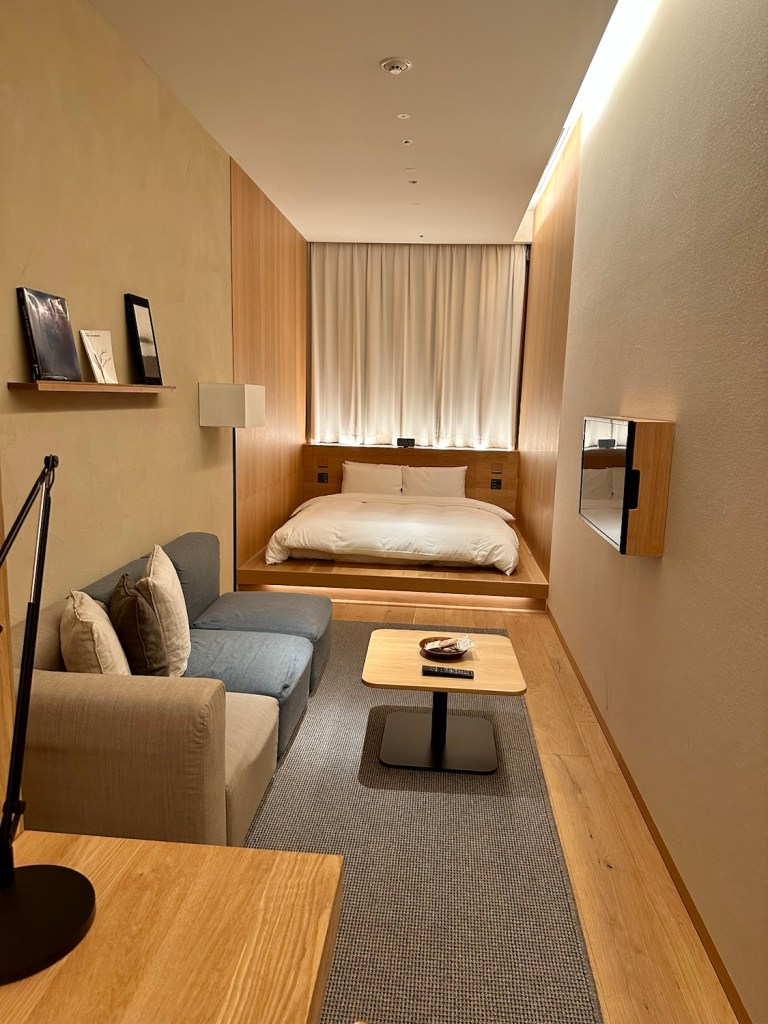


There are standard amenities which you can take home with you. It’s a mini version of what you can find at the Muji store.
As modern as it gets, there isn’t a switch in the room (except the bathroom). All appliances, lights, curtains, alarm, cleaning services and phone calls are made through a smart pad. That includes the level of lighting and whatever you’d want to operate in your room without having to stand up. Just bring the tablet with you to control all settings.
Breakfast does not stuff your face in a buffet. Although still a buffet, it’s a rather simple spread of traditional Japanese dishes. Breakfast is at the WA Restaurant to the left of the front desk. To the right of the front desk is The Atelier – Muji’s library – where there are tons of reading material and coffee, tea and some baked goods. The bakery is located in the first floor, while the diner is at the basement. The bakery and diner are open after 11am. Food choices are standard and limited.
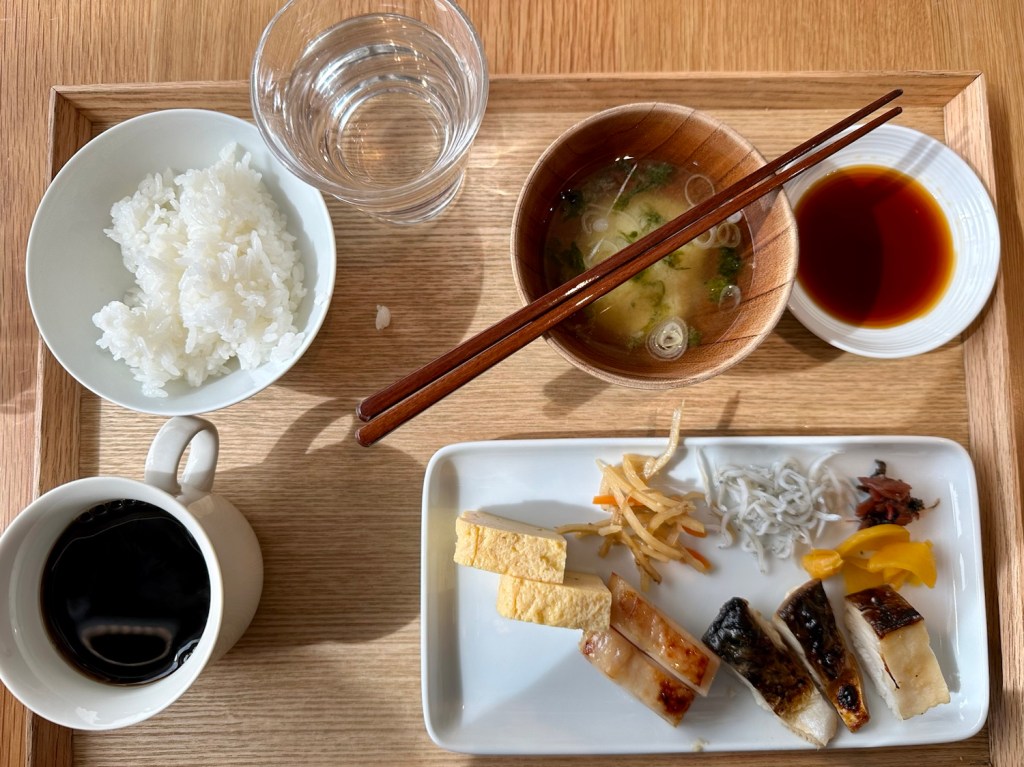
Your stay at the Muji Hotel won’t be complete if you don’t visit their whole 5 floors of shop – from fashion to household needs and appliances to school and office supplies and to their famous diffusers and scents.
Here’s the photo gallery of the five floors of the Muji store below the hotel.

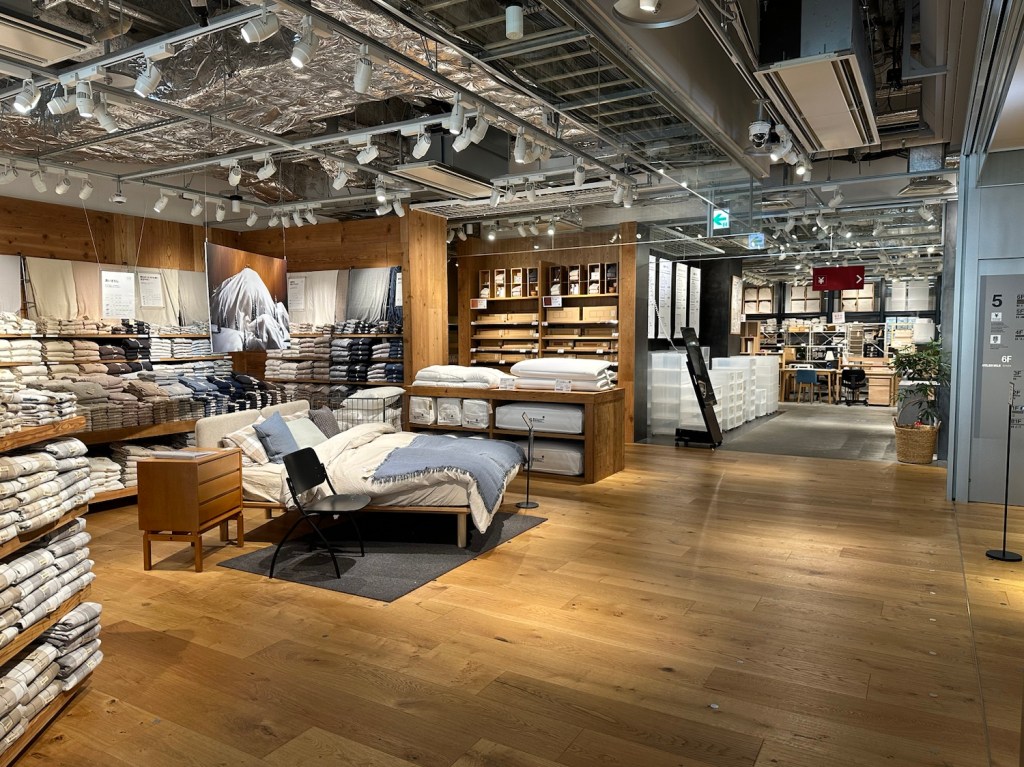






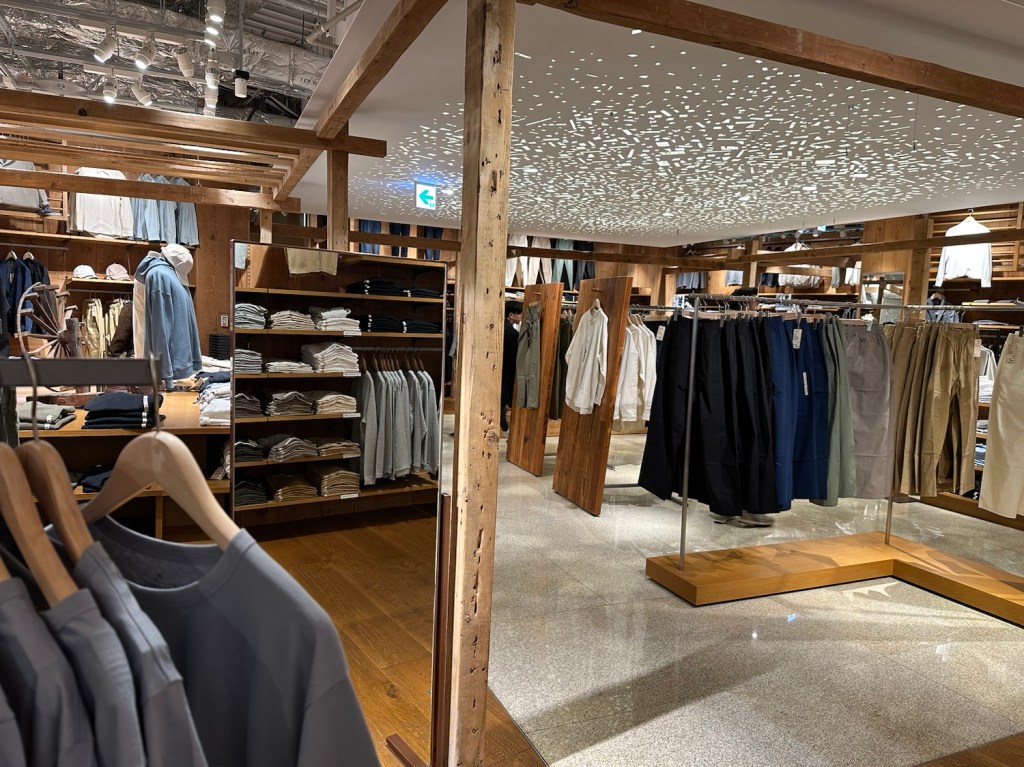
The Muji Hotel at Ginza has its plus and minuses. With Uniqlo and GU just at its side and the posh shops a few steps away, it is, hands down, the best location in Ginza.
But if you’re looking for a hotel with less hits and misses, Muji Hotel at Ginza is over rated as an eco friendly hotel doesn’t really work well for the elderly and persons with disability. If you fall into the latter category, this should not be a choice for you.
It’s also stressful that they require all guests to check out promptly at 11am. And they need all the card keys when you check out (so that means that there’s no taking home those card keys as a souvenir). But there is always a place to put your bags in the lobby and you can always have lunch at WA if you’re waiting for a late afternoon flight.
You can reserve a room online at this link: https://hotel.muji.com/ginza/en/

